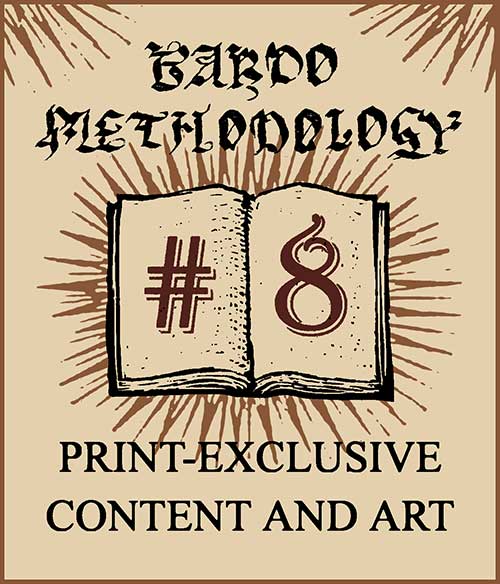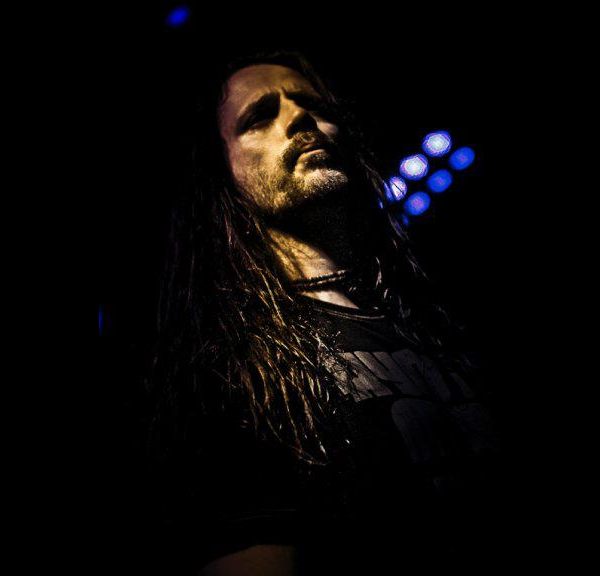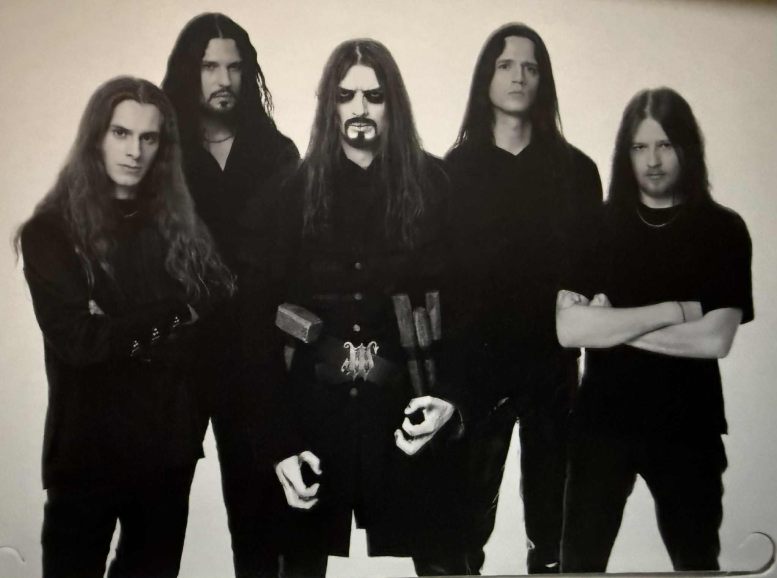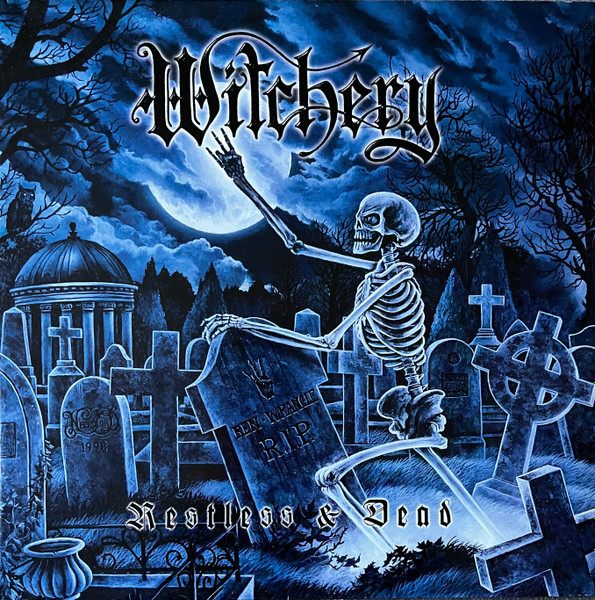Necropolis Records IX
2025-11-13
by Niklas Göransson
The rise of Witchery crowned Necropolis with power and promise, as Restless & Dead carried the label onto the world stage. Yet within that radiance smouldered fatigue and fracture – each new triumph feeding the fire consuming its creator.
PAUL TYPHON: Jensen uprooted his entire life in Linköping, job and all, to move halfway across Sweden and take a shot at becoming a full-time musician. Leaving everything behind like that to chase a dream takes serious guts; it showed me how deeply he wanted this.
Necropolis Records released SATANIC SLAUGHTER’s “Land of the Unholy Souls” in June 1996. Although technically an album, it consisted mostly of alternate versions of debut and demo-era material.
Around the same time, main songwriter Patrik Jensen relocated from Linköping to Gothenburg, hoping to advance his music career. He’d recently left death metal band SEANCE after two albums, whereas SATANIC SLAUGHTER had yet to gain much traction.
PAUL: SATANIC SLAUGHTER suffered the same fate as many early Necropolis releases: I just couldn’t get them on the road. Although it was Ztephan Dark’s band, the other members were miles ahead in terms of musicianship, and they’d often clash about their future direction.
Meanwhile, Jensen teamed up with four veteran Gothenburg musicians – Anders and Jonas Björler, Adrian Erlandsson, and Peter Dolving – to form THE HAUNTED.
During their tenure in AT THE GATES, which ended in the summer of ‘96, Erlandsson and the Björler twins had helped shape the Gothenburg death metal sound – blending aggressive riffing with strong hooks and harmonies. THE HAUNTED retained those melodic sensibilities but pushed them toward a faster, thrashier edge.
PAUL: THE HAUNTED had a tight and precise sound – focused on clean, powerful execution – but with SATANIC SLAUGHTER, Jensen could loosen up and experiment more. By then, Necropolis ran a publishing division, actively pitching material and trying to figure out where it might stick.
These promotional efforts paid off in unexpected ways. One example was NIFELHEIM appearing on the soundtrack to Harmony Korine’s 1997 film Gummo – a bleak, experimental portrait of life in a tornado-stricken Ohio town.
PAUL: I’d started thinking, ‘How do I get these bands out there if they don’t tour?’ This was when the whole thrash revival began, and Osmose Productions had just released “Encyclopedia of Evil” – that BEWITCHED EP with covers we modelled the VONDUR mini-CD after.
Although often lumped in with the retro-thrash wave, BEWITCHED was more of a tribute to the ‘80s presented through black metal aesthetics – completely devoid of the humorous elements adopted by many such bands. Rather than thrash, their foundation came from VENOM, BATHORY, and CELTIC FROST, blended with melodic metal like MERCYFUL FATE, JUDAS PRIEST, and IRON MAIDEN.
PAUL: “Encyclopedia of Evil” inspired a conversation between me and Jensen – I asked, ‘What do you think about recording some covers?’ I trusted SATANIC SLAUGHTER completely and knew they’d outdo BEWITCHED <laughs>. The guys selected which songs to cover: ACCEPT, W.A.S.P., JUDAS PRIEST and BLACK SABBATH.
Once Jensen had arranged SATANIC SLAUGHTER’s renditions and finished three new songs, the material was rehearsed with a full line-up. However, just as they were about to enter the studio, tensions reached a boiling point, leaving founder and bass player Ztephan Dark as the sole remaining member.
Shortly before this, Jensen had run into MERCYFUL FATE bassist Sharlee D’Angelo in a Gothenburg bar. The two struck up a conversation and decided to collaborate on a black/thrash act.
PAUL: When they met, Jensen had been writing technical thrash for THE HAUNTED and probably wanted to explore something different. The first SATANIC SLAUGHTER album was all him; he approached it like a black metal record, and I think that style stayed in his head.
Since the exiled SATANIC SLAUGHTER line-up had already learned and rehearsed the material, they decided to proceed and use the session as a testing ground for Jensen’s new project with Sharlee D’Angelo.
PAUL: Jensen, Richard Corpse, Mique, and Toxine had all played together in SEANCE; they were well-rehearsed and tight as a unit. Bringing in Sharlee elevated everything – his Rickenbacker tone was monstrous, and he’s such a gifted musician with a great ear for melody.
SEANCE guitarist Toxine took on the position of frontman – the same role he held in SATANIC SLAUGHTER.
PAUL: There’s a good story of how Toxine ended up singing in SATANIC SLAUGHTER. Ztephan Dark was meant to do it, but his timing never clicked in the studio. Toxine, who just wanted to go home, grabbed the lyric sheets in frustration and snapped, ‘I’ll do it!’ Never sung before – and he delivers those vocals.
In April 1997, the as-yet-unnamed quintet entered Los Angered Recordings, owned and operated by Swedish producer and KING DIAMOND guitarist Andy LaRocque.
PAUL: The covers turned out phenomenal – “Neon Knights” (BLACK SABBATH) especially – and Andy LaRocque’s production was perfect for that rock ‘n’ roll-meets-blackened-thrash sound of their original material. Jensen didn’t want to launch the band with a mini-CD of mostly covers, so I said, ‘Okay, let’s wait for the full-length.’
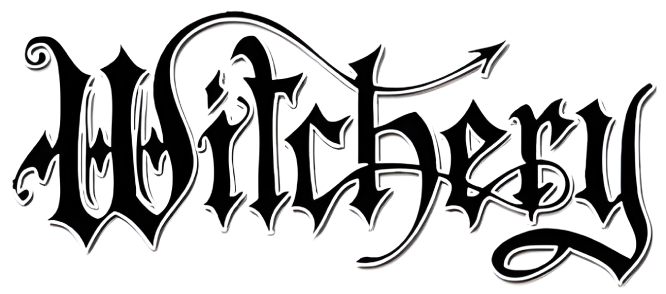
PAUL: When Jensen told me he’d decided to call the project WITCHERY, I wasn’t sold at first. Same with THE HAUNTED, actually. In fact, every time he’s mentioned a new band name, I’ve needed time to warm up. But he’s brilliant – always thinking deeper, still carrying that youthful spark of a teenager spinning vinyl, even later in life.
After settling on a moniker, Jensen and D’Angelo began tossing around conceptual ideas.
PAUL: They really leaned into this tongue-in-cheek heavy metal vibe. Apparently, Jensen and Sharlee had been sitting in a bar, coming up with things like the ‘W’ hand sign, their mascot Ben Wrangel, and the album title wordplay on “Restless and Wild” (ACCEPT).
WITCHERY’s debut album, “Restless & Dead”, was recorded during a week in January 1998 at Linköping’s Blue Hill Studios.
PAUL: We switched to a smaller studio, kept the process raw and underground, and somehow they nailed it. Jensen is a brilliant songwriter – his favourites are AC/DC, DARK ANGEL, and “Infernal Overkill” (DESTRUCTION). Fuse all of them together, then add the rock ‘n’ roll edge Sharlee brought, and you get something wild.
PAUL: “Restless & Dead” was the kind of album I’d always dreamed of; material that fit the vision, as opposed to some obscure demo reissue or a half-hearted side-project. Instead of getting overexcited and doing the usual Necropolis thing – releasing it immediately – I wanted a proper, professionally executed campaign.
In an old WITCHERY interview, Jensen recalled Paul persuading the band to delay the release until year’s end for an all-out promotional blitz.
PAUL: I asked our partners in Europe what would motivate them to really push the release. My Swedish distributor, House of Kicks, wanted a WITCHERY interview in Close-Up Magazine. Rough Trade in Germany said, ‘We need Metal Hammer to give it a 9/10 review.’
Before websites, social media, or online promo cycles became ubiquitous, coverage in major print magazines could make or break a release.
PAUL: From a music-business perspective – and I only realised this later – these processes were standard practice. Remember what I said earlier: you must convince someone standing in a record shop, surrounded by a thousand other titles, to pick up yours. That’s the magic moment.
Fans would read physical publications to discover new bands, record shops relied on their endorsements to decide what to stock, and distributors used them to gauge demand.
PAUL: Even at an indie level, you had to project confidence and show what you were doing: ‘Look, a thousand promos are being sent out to radio stations across the US and Europe.’ The goal was to build excitement – taking a record you believed in and convincing others it’s the best thing they’ll ever hear.
And this made a noticeable difference in how distributors prioritised releases?
PAUL: Exactly. In the record business, you’re at the mercy of your distributors; it needs to be worth their while. Luckily, House of Kicks, Rough Trade, Plastic Head – all of them recognised that “Restless & Dead” would be a strong release. You had Jensen and Sharlee together, the SEANCE guys, plus the HAUNTED connection building anticipation.
In June 1998, before “Restless & Dead” came out, Earache Records released THE HAUNTED’s self-titled debut. It was an instant success – the international metal press hailed it as a landmark album, and the band topped year-end lists in magazines like Terrorizer.
Later that summer, Paul and Jensen attended the German music industry conference Popkomm.
PAUL: We hit every booth, determined to get distributors excited. There was a Danish company called Nordic Metal, then Spinefarm, Plastic Head… Jensen and I handed out promos to everyone. The next day, they were all saying, ‘Holy shit, I listened last night – incredible album!’ We made a lot of noise about WITCHERY, probably annoying Earache in the process <laughs>.
Did Earache complain?
PAUL: Not really, but I’m sure they weren’t thrilled about Jensen wearing WITCHERY shirts everywhere. I also remember the Terrorizer issue with a THE HAUNTED poster showing him doing the ‘W’ sign. Maybe Earache even figured the band should’ve signed with them instead.
PAUL: The creative direction was entirely Jensen’s, though having a cover by Necrolord tied everything together. “Restless & Dead” marked a real milestone for the label – it pushed Necropolis into another league. I didn’t anticipate that kind of response, but the metal press latched onto it right away.
In October 1998, Necropolis Records released WITCHERY’s debut, “Restless & Dead”.
PAUL: The single biggest impact was how it completely changed Necropolis’ standing, putting us on the same map as Metal Blade and Century Media. Suddenly, record stores took us seriously – and, more importantly, so did distributors who’d never returned my calls before.
Finally, Necropolis had a Scandinavian band willing to promote their music in concert. After being crowned ‘Best Newcomer of 1998’ by Suomi Finland Perkele Metal Magazine, WITCHERY performed at the publication’s awards ceremony – aired on Finnish television, with a young NIGHTWISH opening.
PAUL: We were completely aligned on WITCHERY and where to take it. In classic Patrik Jensen fashion, he said, ‘Look, I’ll keep writing albums as long as you can put them out.’ The plan was to release a new record every six to eight months – something no one had ever done before.
I’m sure there’s a reason for that.
PAUL: Jensen assured me he could pull it off, and I believed him. He understood that kind of music on a fundamental level, so writing riffs was almost effortless. To be honest, WITCHERY blew away most of the competition. Compare “Restless & Dead” to some half-baked black metal record – you can’t deny Jensen simply wrote better songs.
Neither THE HAUNTED nor WITCHERY is my kind of music, so I can’t really comment on the songwriting quality. However, considering the impact of both bands, it’s quite impressive for someone who’d already been active for a decade. By that point, many musicians have burned out creatively.
PAUL: Jensen is the real deal. He’s been far more productive than most guys I’ve managed: writes all the music, gets everyone fired up for the studio, respects deadlines, and handles business. He’s personable, well-travelled, level-headed, and great at keeping people motivated – which isn’t exactly a typical Swedish trait.
Oh? Do elaborate.
PAUL: Honestly, the toughest part of running Necropolis was acting as a therapist. I’d sign all these musicians society had written off – unreliable adults, often unemployed, medicated, living off government benefits – who’d then rely on me for everything. ‘Can you pay for this? I need money.’ Almost every day, I’d have someone calling about a new crisis.
log in to keep reading
The second half of this article is reserved for subscribers of the Bardo Methodology online archive. To keep reading, sign up or log in below.

